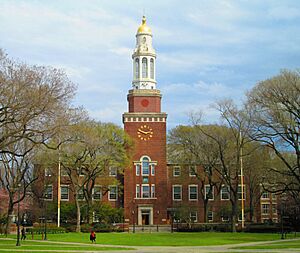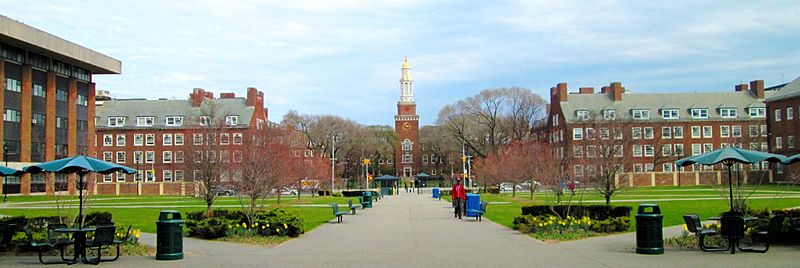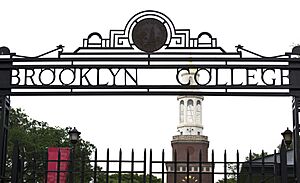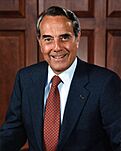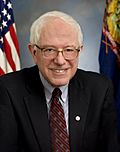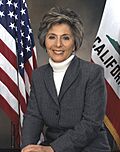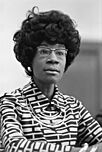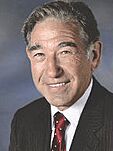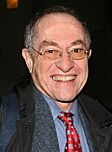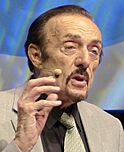Brooklyn College facts for kids
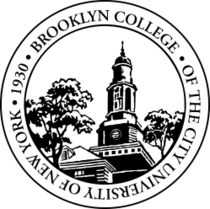 |
|
| Motto | Latin: Nil sine magno labore |
|---|---|
|
Motto in English
|
Nothing without great effort |
| Type | Public university |
| Established | 1930 |
|
Parent institution
|
City University of New York |
| Endowment | $98.0 million (2019) |
| Budget | $123.96 million (2021) |
| President | Michelle Anderson |
| Provost | April Bedford |
|
Academic staff
|
1,259 (fall 2023) |
| Students | 13,935 (fall 2023) |
| Undergraduates | 11,330 (fall 2023) |
| Postgraduates | 2,605 (fall 2023) |
| Location |
,
,
United States
40°37′52″N 73°57′9″W / 40.63111°N 73.95250°W |
| Campus | Urban, 35 acres (14 ha) |
| Colors | Maroon, gold, & grey |
| Nickname | Bulldogs |
|
Sporting affiliations
|
|
| Mascot | Buster the Bulldog |
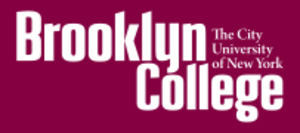 |
|
Brooklyn College is a public university located in Brooklyn, New York City. It is part of the City University of New York (CUNY) system. The college has a beautiful 35 acres (14 ha) campus in the Midwood neighborhood and serves nearly 14,000 students.
The college was started in 1930. It was created by combining the Brooklyn locations of Hunter College (which was for women) and the City College of New York (which was for men). This made Brooklyn College the first public college in New York City that welcomed both men and women to study liberal arts.
Many famous people have graduated from Brooklyn College. They include U.S. senators, judges, famous business leaders, and winners of major awards like the Academy Awards and Nobel Prizes.
Contents
History of the College
How It All Started
Brooklyn College was founded in 1930. It brought together two separate college branches that were already in Brooklyn. This new college became the first public coeducational (for both men and women) liberal arts college in New York City. At first, men and women had separate classes until their third year.
In 1932, an architect named Randolph Evans designed the main campus in the Midwood area of Brooklyn. He imagined a classic-looking campus with brick buildings around a central grassy area called a quad. At the center would be a library with a tall tower.
Construction on the new campus began in 1935. In 1936, U.S. President Franklin D. Roosevelt visited to lay the cornerstone for the gymnasium. The beautiful new campus officially opened in the fall of 1937.
From 1939 to 1966, the college's second president, Harry Gideonse, led the school. During this time, Brooklyn College became known for how many of its graduates went on to earn doctorate degrees. The college also hired some of the first Black professors in the city's college system.
In 1962, Brooklyn College joined with other city colleges to form the City University of New York (CUNY).
Years of Change
Like many colleges in the 1960s and 1970s, Brooklyn College saw many student protests. Students spoke out about important issues of the time, such as the Vietnam War and the need for more diversity on campus. These were years of great change for the college and the country.
In the late 1970s, Robert Hess became the college's sixth president. He made big changes to the curriculum, creating a set of core classes that all students had to take. This focus on a strong education in the humanities (subjects like literature, art, and history) earned the college praise.
By the 1980s, Brooklyn College was seen as one of the best public universities in the country. It was sometimes called "the poor man's Harvard" because it offered a top-quality education at a low cost. President Hess joked, "I like to think of Harvard as the rich man's Brooklyn College."
The College Today
Today, the Brooklyn College campus is known for its beauty. The Princeton Review once called it the most beautiful campus in the country.
The college has continued to grow and improve. A new building called the West Quad Center was built. It has classrooms, gyms, and a swimming pool. The college also opened The Leonard & Claire Tow Center for the Performing Arts, named after two alumni who gave a large donation.
In 2016, Michelle Anderson became the 10th president of Brooklyn College. The college also added a new building for its Koppelman School of Business. For several years in a row, U.S. News & World Report has named Brooklyn College the most ethnically diverse college in its region.
Schools and Academics
Brooklyn College is made up of five different schools:
- Murray Koppelman School of Business
- School of Education
- School of Humanities and Social Sciences
- School of Natural and Behavioral Sciences
- School of Visual, Media, and Performing Arts
What Students Study
All undergraduate students at Brooklyn College take a set of required classes called the Pathways curriculum. This ensures that every student gets a broad education in different subjects, from math and science to literature and art. Students can then choose from over a hundred different majors.
The college also offers many graduate programs for students who want to continue their education after getting their first degree.
Special Programs
Brooklyn College has several special programs for high-achieving students.
- B.A.–M.D. Program: This is an eight-year program for students who want to become doctors. A small number of students are chosen each year to earn both a bachelor's degree from Brooklyn College and a medical degree from SUNY Downstate Medical Center.
- The Scholars Program: This is the oldest honors program in the CUNY system. It offers special small classes for students with excellent grades and writing skills.
- Coordinated Engineering Program: This program allows students to complete their first two years of engineering study at Brooklyn College. They are then guaranteed a spot to finish their degree at another top engineering school.
Feirstein Graduate School of Cinema
The Barry R. Feirstein Graduate School of Cinema is the first public graduate film school in New York City. It is located at Steiner Studios, a major film studio. This gives students the amazing opportunity to learn about filmmaking right where movies are being made. The school offers advanced degrees in subjects like directing, screenwriting, and cinematography.
College Sports
Brooklyn College's sports teams are called the Bulldogs. The college competes in Division III of the National Collegiate Athletic Association (NCAA).
Men's sports include basketball, soccer, swimming, tennis, and volleyball. Women's sports include basketball, soccer, softball, swimming, tennis, and volleyball. The college also has cheerleading teams.
In 2010, the college chose the Bulldog as its mascot. Before that, the teams were known as the Kingsmen and later the Bridges.
Famous People from Brooklyn College
Famous Graduates
Many well-known people attended Brooklyn College.
-
Bob Dole, a former U.S. Senator and presidential candidate.
-
Bernie Sanders, a U.S. Senator from Vermont.
-
Barbara Boxer, a former U.S. Senator from California.
-
Shirley Chisholm, the first Black woman elected to the U.S. Congress.
-
Stanley Cohen, a biochemist who won a Nobel Prize.
-
Alan Dershowitz, a famous lawyer and professor.
-
James Franco, an actor who earned a Master of Fine Arts degree here.
-
Philip Zimbardo, a social psychologist known for his famous experiments.
-
Don Lemon, an award-winning news anchor and journalist.
- In Government: Besides those pictured, graduates include Congresswoman Shirley Chisholm and several federal judges.
- In Business: Alumni include Adobe Inc. CEO Bruce Chizen, Warner Bros. CEO Robert A. Daly, and New York Mets President Saul Katz.
- In Science and Education: Graduates include Nobel Prize-winning biochemist Stanley Cohen and social psychologist Stanley Milgram.
- In the Arts: Famous alumni include actor and director Mel Brooks, actor Jimmy Smits, and many writers who have won the Pulitzer Prize, a top award for writing.
Famous Teachers
-
F. Murray Abraham, an Oscar-winning actor.
-
Hannah Arendt, a famous philosopher.
-
John Ashbery, a Pulitzer Prize-winning poet.
-
Allen Ginsberg, a famous poet of the Beat Generation.
-
Itzhak Perlman, a world-famous violinist.
-
Mark Rothko, an influential modern artist.
Brooklyn College has had many famous faculty members over the years. They include:
- F. Murray Abraham, an Oscar-winning actor who taught theater.
- Hannah Arendt, a well-known philosopher and writer.
- Allen Ginsberg, a famous poet who was a leader of the Beat Generation.
- Abraham Maslow, a psychologist known for his theory on human needs, called the "hierarchy of needs."
- Itzhak Perlman, one of the most celebrated violinists in the world.
- Mark Rothko, a famous painter who was a key figure in the abstract expressionist art movement.
- Ruth Westheimer (Dr. Ruth), a famous therapist and television host.
Images for kids
See also
 In Spanish: Brooklyn College de la Universidad Municipal de Nueva York para niños
In Spanish: Brooklyn College de la Universidad Municipal de Nueva York para niños


